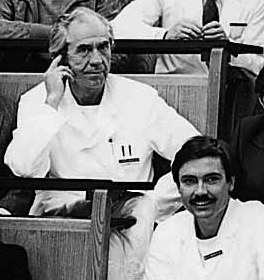Andreas Roland Grüntzig
Andreas Roland Grüntzig was born in Dresden, Germany, in 1939 and died in a plane crash in the United States in 1985. In his short life he invented a number of medical techniques and changed cardiology for ever with one. Percutaneous transluminal coronary angioplasty (PTCA), or percutaneous coronary intervention (PCI) as it is called today, was not the first catheter-based invasive treatment in cardiology. Yet it is the one that created the discipline called interventional cardiology, meaning catheter-based therapy for coronary or structural heart disease. Electrophysiology should be but is not subsumed under this heading. On September 16, 1977 Dölf Bachmann, a 38-year-old salesman, was the world’s first patient to undergo PCI. He had a single discrete stenosis in the proximal left anterior descending coronary artery and unstable angina. Andreas Grüntzig had been looking for a straightforward case like that for almost 3 years. Coronary angiography at that time period was only done in patients with advanced and drug refractory symptoms and almost invariably multivessel disease with impaired left ventricular function was found. The procedure went well and neither an abrupt closure (later occurring in 7% of balloon angioplasties) nor a restenosis (problem in about 35% of balloon angioplasties) occurred. The patient, an age-mate of Grüntzig is celebrating his 72nd birthday in 2011 and enjoys excellent health. He needed one additional PCI in another place in 2000.
Andreas Grüntzig met support at the University Hospital of Zurich by a pioneer in his own right, Åke Senning, and his right arm, Marko Turina. He was far less supported by the cardiologists or the internists, his superiors. This slowed down the development of the technique considerably and finally led to Grüntzig’s frustration, resignation, and emigration to the United States. There he was welcomed enthusiastically and equipped with all he needed to join the boom of PCI that had already started in many places, save Zürich. The balloon and its accessories, the guidewire and the guiding catheter, have seen significant improvement but in principle stayed the same and are still the backbone of the procedure. The stent and only the stent significantly has improved the potential of PCI. In a way, the interest, doctors, industry, and media invested into PCI also has been the midwife to other pivotal and common interventional therapies in cardiology (not to mention other specialties) such as percutaneous valve interventions, percutaneous shunt closure, and ablation therapies.

Åke Senning (left) and his protégé Andreas Roland Grüntzig in the late 70ies
